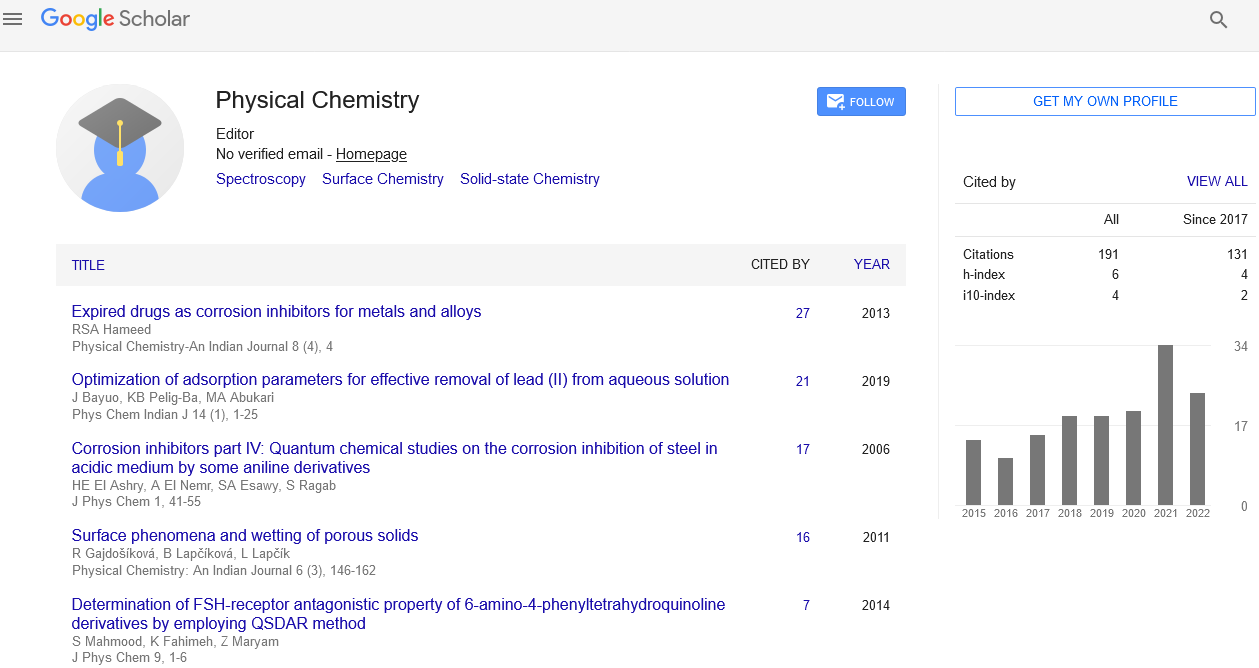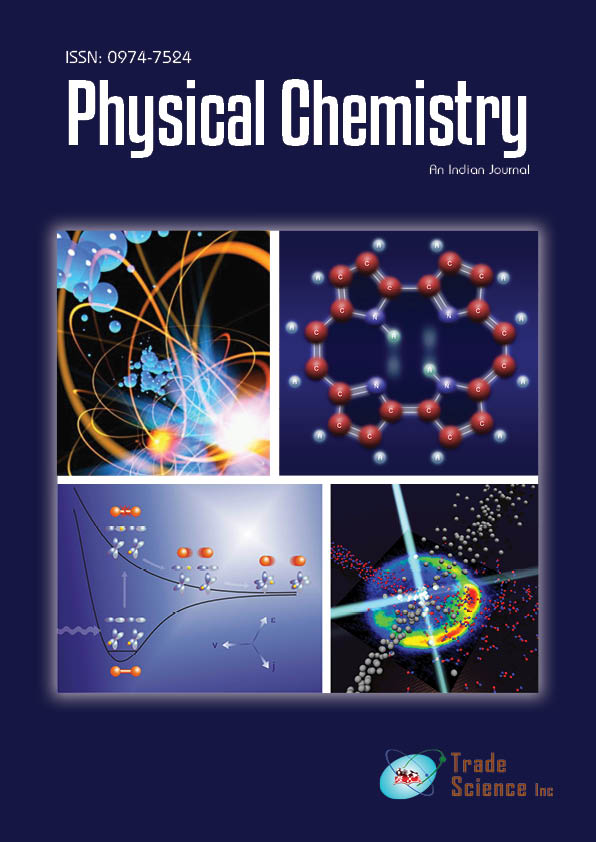Editorial
, Volume: 16( 4)Microheterogeneity in Ionic Liquids: A reality
Received: June 14, 2021; Accepted: July 5, 2021; Published:July 15, 2021
Citation: Saha S. Microheterogeneity in Ionic Liquids: A Reality. Phys Chem Ind J. 2021;16(4):146.
Abstract
Editorial
Even though Sundermeyer first used Ionic Liquids (ILs) in catalysis as early as 1965 [1]. The real potential of ILs became fully appreciated in less than two decades. It was mainly initiated by K R Seddon and R D Rogers groups [2,3]. A focus of ILs research was first placed on developing “greener” alternatives to hazardous organic solvents as many organic reactions were found to undergo efficiently in ILs [4-5]. In the past decades, with the involvement of many researchers from different fields of sciences, the scenario has changed. Now, the ILs have immerged as whole new materials, much of which are yet to be discovered or understood. Over the years, ILs have found various potential applications; as the catalyst, electrically conducting fluids (i.e., electrolytes), and in many other applications in addition to powerful green solvent.
The IL is a substance that is composed solely of anions and cations. Therefore, it is expected to possess some kind of short-range organization (i.e., some kind of charge ordering) so as to fulfil the local electro-neutrality condition and also to maximize the electrostatic interactions between ions of opposite signs. In addition to these, there are several weak interactions (such as van der Waals interaction) have been discovered during the last two decades. Altogether, it is now no wonder that IL might organize its high charge density portion into a local structure that obeys electro neutrality but possess a kind of supramolecular structure to a certain length.
Simultaneously but independently, Saha and Holbery first discovered the polymorphisms of imidazolium cation back in 2003 [6,7]. We could sense the possibility of having microheterogeneity that time itself. Therefore, it was mentioned in our paper, “Ionic liquids seem to be unique in that they have definite local structures despite their homogeneous appearance” [6]. We believed that several unique features/applications are often reported in the literature due to microheterogeneity. A detailed Raman spectroscopic studies helped us elucidate the deeper aspect at the molecular level [8]. Later on, we have published several pieces of evidence of the existence of unique interaction in ILs leading to the formation of microscopic heterogeneity/ nanostructuredness and as well as experimentally estimated the possible shape and size of imidazolium cation based ILs [9-14]. To date, a large number of publications are focused on this issue of microheterogeneity/local structure in ILs, but the issue is yet to be understood beyond doubt. However, all recent data published clearly indicates that ILs are not structurally homogeneous; rather, an unexpected degree of mesoscopic heterogeneity might exist.
References
- Sundermeyer W. Fused salts and their use as reaction media. Angew Chem Int Ed Engl. 1965;4(3):222.
- Seddon KR. A taste of the future. Nat Mater. 2003;2(6):363-5.
- Rogers RD, Seddon KR. Ionic liquids-solvents of the future? Science. 2003;302(5646):792-3.
- Welton T. Room-temperature ionic liquids. Solvents for synthesis and catalysis. Chem Rev. 1999;99(8):2071-84.
- Wasserscheid P, Keim W. Ionic liquids-new “solutions” for transition metal catalysis. Angew Chem Int Ed. 2000;39(21):3772-89.
- Saha S, Hayashi S, Kobayashi A, et al. Crystal structure of 1-butyl-3-methylimidazolium chloride. A clue to the elucidation of the ionic liquid structure. Chem Lett. 2003 Aug;32(8):740-1.
- Holbrey JD, Reichert WM, Nieuwenhuyzen M, et al. Crystal polymorphism in 1-butyl-3-methylimidazolium halides: Supporting ionic liquid formation by inhibition of crystallization. Chem Commun. 2003(14):1636-1637.
- Iwata K, Okajima H, Saha S, et al. Local structure formation in alkyl-imidazolium-based ionic liquids as revealed by linear and non-linear Raman spectroscopy. Acc Chem Res. 2007;40(11):1174-81.
- Tripathi N, Saha S. Unraveling the heterogeneity in N butyl-N-methylpiperidinium trifluromethanesulfonimide ionic liquid by 1D and 2D NMR spectroscopy. Chem Phys Lett. 2014;607:57-63.
- Panja SK, Dwivedi N, Noothalapati H, et al. Significance of weak interactions in imidazolium picrate ionic liquids: spectroscopic and theoretical studies for molecular level understanding. Phys Chem Chem Phys. 2015;17(27):18167-77.
- Panja SK, Srivastava N, Srivastava J, et al. Evidence of C-FP and aromatic π-FP weak interactions in imidazolium ionic liquids and its consequences. Spectrochim Acta A: Mol Biomol Spectrosc. 2018;194:117-25.
- Panja SK, Saha S. Microheterogeneity in imidazolium and piperidinium cation‐based ionic liquids: 1D and 2D NMR studies. Magn Reson Chem. 2018;56(2):95-102.
- Panja SK, Dwivedi N, Noothalapati H, et al. Significance of weak interactions in imidazolium picrate ionic liquids: spectroscopic and theoretical studies for molecular level understanding. Phys Chem Chem Phys. 2015;17(27):18167-77.
- Verma A, Prasad NE, Srivastava J, et al. Probing the heterogeneity of ionic liquids in solution through phenol‐water phase behavior. Chem Sel. 2019;4(1):49-58.

